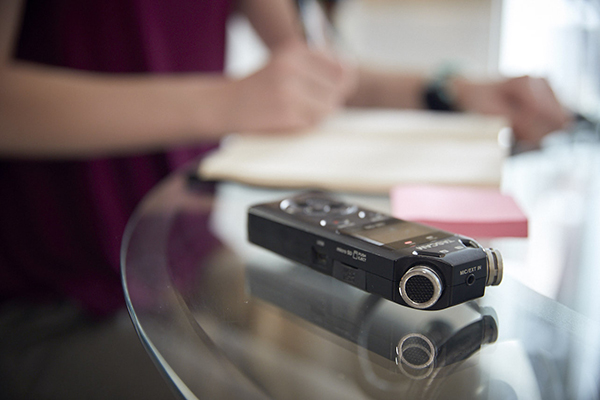4 Smart Tips for Pivoting Human Factors Research from In-Person to Remote
Almost two years after learning that we’d be working from home (for what we thought would be only a couple of weeks), it’s clear that COVID-19 is not going to go away so easily — and new coronavirus variants continue to emerge. Medical device and combination product manufacturers will have to account for possible interruptions to their product design efforts and human factors research in the ongoing climate. One of the main issues is that human factors engineering research has primarily been conducted in person. However, with extreme uncertainty affecting nearly every industry, companies cannot afford for their human factors research to back up or pause any longer than necessary if in-person research is no longer feasible. HFE research teams are under immense pressure to find new and effective ways to conduct human factors research to deliver high-quality usability and human error assessments.
So, from a timing, resource, and budget perspective, how can HFE teams reduce interruptions and the impact of coronavirus variants on human factors decision-making? Or rather, how can teams pivot their studies and interventions to adapt to the rapidly changing circumstances?
To devise an adaptable human factors research strategy and stay agile, read through the four smart tips that our team recommends to successfully pivot from in-person to remote user research assessments as conditions require.
1. Establish Concrete Targets for Timelines, Budget, and Resources
Human factors research is a significant investment for any healthcare and medical device manufacturer, consisting of participant recruitment and incentive payments, rental of a facility capable of simulating a specific work environment or user experience, and recruitment vendor management fees. You become accountable for these fees when you decide to kick off an in-person research project. Accordingly, if you identify a need to pivot to remote user research after recruitment has begun due to an increased exposure risk from COVID-19, for example, you will likely be held responsible for the majority, if not all, of the agreed-upon costs. That’s why establishing a go or no-go decision date for conducting human factors research in-person vs. remotely is crucial. Be aware of the critical dates where you will begin to incur non-refundable costs. With in-person research, these typically include:
– Facility rental costs
– Participant honoraria hosts
– Recruitment vendor management costs
Communicate these dates to your research team or client to be aware and give their informed blessing to proceed at risk. We recommend scheduling this decision date a few days before recruitment begins (typically 2-3 weeks before the study start date). Making this final in-person vs. remote research decision as close to the study dates as possible (without compromising the recruiting process) will enable you to make an informed decision, considering the current COVID-19 case rates and trends.
2. Recruit participants who can accommodate in-person and remote user research
Human factors research studies require HFEs to develop a recruitment screener to identify qualified healthcare professionals as participants. A screener focuses primarily on conditions and relevant experience that qualify participants as representative users for in-person research. For remote user research, the screener must pay particular attention to the enabling technologies a respondent has available to them and verify that the technology stack is suitable for facilitating a high-quality assessment. The technology to enable remote user research has never been so available and sophisticated, but you still need to do your homework to ensure a seamless and trouble-free piece of remote user research. Typical technology assessment questions on a remote research screener might include:
– Do you have access to a laptop or desktop computer (rather than a tablet)?
– Do you have access to a webcam?
– Do you have a stable internet connection? Is the bandwidth sufficient to deliver good quality audio and video?
– Do you have a place where you can participate without someone listening in?
One critical scenario to consider when running a study is what happens if you plan for in-person research and then have to pivot to remote user research. A significant proportion of the recruited participants may not have the right technology stack to participate remotely. You may incur high costs to re-recruit new participants who qualify and have the right technology available to them for remote user research. Timelines will be likely to be extended as a result if there’s not enough time to recruit new participants within the existing study schedule.
With new Coronavirus variants constantly emerging more frequently than any of us would like and seasonal trends in increased COVID-19 case rates, it’s essential to continue to anticipate the potential need to shift from in-person to remote user research. To avoid additional costs and delays, we recommend including any questions associated with remote human factors research in in-person research screeners, enabling you to feel confident that the participants you’ve recruited will be ready to pivot with you if needed.
3. Ensure human factors research teams are prepared to accommodate remote user research
So now you’ve ensured that your research participants can pivot with you to remote user research at the last minute if needed. You need to make sure that your research team is also ready to pivot. They will need to have the appropriate platforms and collaboration tools to conduct effective research remotely, such as:
– Video conferencing platforms they are comfortable with
– Webcams to facilitate remote data collection
– High-quality microphones and speakers
– A non-distracting environment so participants can stay focused and on-task
– A second monitor for data collection (and participant video on another)
Even if you are accustomed to working remotely and have many of these tools in place, it’s essential to take the time to think about how research needs might differ from daily remote meeting needs and how that might impact your remote research toolkit. With that, we recommend setting aside time to go through the list of collaboration tools with your research team before the testing sessions to ensure you have everything you need and everything is working correctly. Not much compares to that sinking feeling of getting in front of a participant and wasting valuable testing time to troubleshoot or fix a technology issue. Although sometimes technology interruptions are unavoidable, you’ll want to make sure you’ve done all you can to be best prepared.
4. Find creative solutions to make the most of your time with participants
Even if you have successfully prepared your study screener and research team for the potential to transition to remote user research, a hands-on evaluation of your product may not be feasible remotely. For example, you might not have time, inventory, or budget to ship your product to each participant’s home. Or maybe you have a product that poses a risk to your participants if they are using it without in-person supervision from a trained research staff member, such as an injection device. Ask yourself if you can still gain value by moving forward with research. The answer is almost always yes. Consider as well that often the significant financial commitments have already been made, so, rather than canceling or postponing the study altogether, the incentive to make the most of the time, budget, and resources that you’ve already set aside is enormous. Additionally, any time you speak with users throughout development is time well spent, as well as a formative evaluation you can take credit for in your HFE/UE Report.
So, what do you do if you have qualified participants on a schedule but a product that cannot be evaluated via a remote research methodology? You can consider the following research opportunities when revising your discussion guide for remote user research:
– What unanswered questions do you have about your users’ needs and expectations?
– Is there information to be gained regarding the product use cases that you might not have uncovered in your initial research or product ideation that will benefit from the application of human factors?
– Could you leverage the opportunity to improve your situational awareness by seeing inside a participant’s use environment if the product is intended to be used at home (with their permission)?
– Even if you cannot ship participants physical products, can you utilize digital assets to collect feedback on a subset of product features or functionality?
We acknowledge that replacing your original protocol with the new research objectives we’ve suggested may not eliminate the need to execute the original study at a later date. However, taking advantage of this time with users allows the team to improve their product and instill confidence that you have followed a user-centered approach.
When life gives you lemons…
Although pivoting research is never ideal, these tips are designed to help HFE teams navigate unprecedented and unpredictable change due to fluctuations in COVID-19 conditions. We recognize that these tips may not be the perfect solution in all situations, but they can save you time and money and enable your HFE teams to make the most of their resources, energy, and planning.
Human Factors is complex with an ever-evolving regulatory landscape — perhaps more so now than ever with the complexities of the COVID-19 pandemic. With years of experience, our Human Factors experts can help you respond to these changes and develop human-centered products to keep your business on track today and into the future.
________________________________________________
ABOUT THRIVE
THRIVE’s Human Factors professionals have decades of experience applying Human Factors to products ranging from medical devices used by specialized healthcare professionals in clinical environments to combination products used by laypeople in the home.
If it’s your first time applying Human Factors and you need a comprehensive end-to-end Human Factors program, we’ll scope out the program and conduct the activities on your behalf, leaving you time and resources to focus elsewhere. If you’re a resource constrained HFE professional, we’ll step in, providing the teamwork, collaboration, and support to help you meet your goals. Or, if you just want a final sanity check to ensure you’ve met the latest and greatest expectations, we’ll do that too.
Contact us today at 404.228.7342 or email [email protected] to get the conversation started.
Atlanta | Chicago | Pittsburgh









